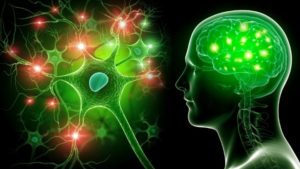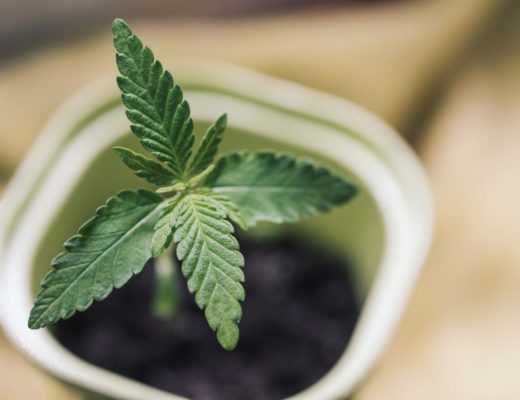Cannabis has been used by humans for thousands of years for medical, ceremonial, and recreational purposes. Researchers have discovered cannabis seeds in China and Siberia that date back to 500 BC. Today, approximately 85% of Americans support the legalization of medical cannabis. According to a poll conducted in 2021, nearly half of all U.S. citizens (49%) have tried marijuana.
While humans have used cannabis to alleviate ailments for a long time, it’s not until recently that researchers have uncovered eye-opening details about how cannabis interacts with the human body. For example, did you know that every animal has an endocannabinoid system (ECS)? The ECS is full of receptors and naturally occurring cannabinoids that assist the body in maintaining homeostasis.
Since the discovery of the ECS, scientists have continued to study the effects and benefits of cannabis. Read below for a deep dive into endocannabinoids, terpenes, and how cannabis works in the human body.
 Understanding The Endocannabinoid System
Understanding The Endocannabinoid System
What are endocannabinoids? Let’s dive into some etymology. “Endo,” or endogenous, means “within,” or something naturally occurs in the body. “Cannabinoid” comes from the word “cannabis.” This means our body naturally produces chemical compounds that are similar to cannabis.
The ECS is comprised of three core parts:
- Endocannabinoids
- Receptors
- Enzymes
These components are found throughout the body’s various systems. The ECS is not just a natural part of your body – it is a crucial system that regulates your overall wellbeing.
What Are Endocannabinoids?
The ECS and endocannabinoids were first discovered in 1992. The human body contains two major endocannabinoids: anandamide and 2-ArachidonoylGlycerol (2-AG). These compounds are similar to the body’s fat molecules, located within cell membranes. Interestingly, the human body creates these compounds on-demand whenever they are needed, while most other biological molecules are stored for later use. But what is the function and purpose of these endocannabinoids?
What Is Anandamide?
Anandamide is often known as “the bliss molecule.” This is because the term anandamide derives from an ancient Sanskrit word, “ananda,” which means “bliss.” Anandamide is a neurotransmitter that plays an important role in early embryo development and memory.
What Is 2-AG?
High levels of 2-AG are present in the central nervous system. This compound is involved in physiological functions such as cognition, emotion, and pain. Researchers have also found 2-AG in human and cow’s milk.
 Maintaining Homeostasis
Maintaining Homeostasis
The primary function of the ECS is to help your body operate optimally. The ECS causes you to feel hungry when you need fuel for your body. It causes you to sweat when you are hot to help you cool down. The ECS helps regulate your body’s most important functions, including:
- Mood
- Sleep
- Appetite
- Digestion
- Memory
- Inflammation
- Immunity
- Temperature
- Pain
- Pleasure
- Fertility and reproduction
The ECS accomplishes homeostasis by activating cannabinoid receptors.
What Are Cannabinoid Receptors?
There are two main receptors within the ECS: CB1 and CB2.
- CB1 receptors are plentiful in the central nervous system, including the brain and spinal cord. Tetrahydrocannabinol (THC) binds with the CB1 receptor to give you a “high” feeling.
- CB2 receptors are found in the immune system, digestive system, and peripheral nervous system.
After your ECS activates these receptors, enzymes come and break them down to prevent overactivity.
What Are Endocannabinoid Enzymes?
Your body knows how to prevent endocannabinoid receptors from becoming too powerful. Metabolic enzymes break down these compounds to keep your body in a precise balance. This is why anandamide itself doesn’t make you feel euphoria, but consuming THC does.
One major enzyme is FAAH. The FAAH enzyme breaks down anandamide, but it isn’t able to break down THC. This means when you consume marijuana, THC has a much longer-lasting and greater effect than anandamide on its own.
What Are Terpenes and How Do They Work?
When you are wondering how cannabis works in the human body, it’s vital to consider the role of terpenes. Terpenes are aromatic compounds found in the cannabis plant and other herbs. They have distinctive scents and flavors and serve as the primary ingredients to aromatherapies and essential oils. Below are some of the most prominent terpenes and their effects on the body.
Myrcene
As the most common terpene in cannabis, myrcene is believed to have sedating and relaxing effects. Myrcene has an herbal, musky, and earthy scent. It may have therapeutic properties to relieve insomnia, inflammation, and pain. You can also find myrcene in mangoes, thyme, and lemongrass.
Limonene
Smelling of citrus, limonene is known to promote stress relief. There is evidence of limonene helping to relieve symptoms of depression and anxiety. Limonene is also present in orange rinds, lemon rinds, and juniper.
Caryophyllene
This terpene acts as a cannabinoid by providing anti-inflammatory and pain-relieving effects. Caryophyllene smells of pepper and spice. You can find caryophyllene in black pepper, cloves, and cinnamon.
Terpinolene
With a floral and piney scent, terpinolene is believed to provide uplifting effects. Research shows terpinolene has antibacterial and antioxidant properties.
Pinene
As the most common terpene found in nature, pinene is found in rosemary, parsley, and pine needles. It may be useful for providing alertness and anti-inflammatory properties.
 Common Physical Effects of Cannabis
Common Physical Effects of Cannabis
Here are some of the common ways cannabis can impact the physical body:
- Pain relief
- Alleviation of and nausea and vomiting
- Increase in appetite and thirst
Common Psychological Effects of Cannabis
Cannabis often has the following impact on mental functions:
- The release of dopamine
- Stress reduction
- Introspection
Potential Medical Benefits of Cannabis
Scientific studies of cannabis show that it may be useful in treating various conditions. Let’s take a look at some of these results.
Chronic Pain
In 2017, the National Academies of Sciences, Engineering, and Medicine looked at 10,000 different studies on the effects of marijuana use. The review found that active ingredients in cannabis are useful in relieving chronic pain.
Mental Health Disorders
The Clinical Psychology Review published an assessment of existing scientific studies that look into the ability of cannabis to treat symptoms of mental disorders. This review showed evidence of cannabis relieving symptoms of post-traumatic stress disorder (PTSD), depression, and anxiety.
Glaucoma
Glaucoma is the second leading cause of blindness after cataracts. Studies dating back to the 1970s show promising results of cannabis reducing intraocular pressure, a core symptom of glaucoma.
Cancer
Studies show numerous benefits of medical cannabis in cancer patients. First, cannabinoids may be effective against vomiting and nausea brought on by chemotherapy treatments. Secondly, cannabinoids may inhibit cancerous tumor growths.
Epilepsy
In 2018, the FDA approved the first cannabis-derived drug. The purpose of this drug is to treat severe and rare forms of epilepsy known as Dravet syndrome and Lennox-Gastaut syndrome. A 2017 study found that CBD drastically reduced the frequency of seizures in kids suffering from Dravet syndrome.
Multiple Sclerosis
As a chronic disease, multiple sclerosis can have multiple symptoms throughout the body, such as vision loss and paralysis. Oral cannabinoids may be useful in improving muscle spasms in patients with multiple sclerosis.
Inflammation
Inflammation is responsible for a variety of ailments, such as headaches, back pain, arthritis, irritable bowel syndrome, and Alzheimer’s. Studies show that cannabis can tame and relieve inflammation.
While we are still learning about the benefits and effects of cannabis, it is clear there are various therapeutic properties of the plant. Learn more about using cannabis as a medicine on our blog!





No Comments